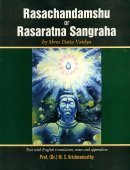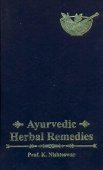Medoroga, Medas-roga: 7 definitions
Introduction:
Medoroga means something in Hinduism, Sanskrit, Marathi. If you want to know the exact meaning, history, etymology or English translation of this term then check out the descriptions on this page. Add your comment or reference to a book if you want to contribute to this summary article.
In Hinduism
Ayurveda (science of life)
Rasashastra (Alchemy and Herbo-Mineral preparations)
Source: Wisdom Library: Rasa-śāstraMedoroga (मेदोरोग) or Medas refers to “obesity” according to the fifth volume of the Rasajalanidhi (chapter 17). Accordingly, “insufficiency of physical exertion, sleeping in day time, and taking of food increasing phlegm are causes which increase sweetness in the rasa or chyle (essence of the food consumed), making it generate more fat than is actually required for the proper maintenance of the body. Fat (medas), thus, accumulates in the system, and the fluid-carrying passages having been blocked by fat, the other dhatus stand a very little chance of being developed. A fatty man thus becomes in-active”.
Unclassified Ayurveda definitions
Source: Wisdom Library: Āyurveda and botanyMedoroga (मेदोरोग) is a Sanskrit technical term translating to “hyperlipidemia”, which refers to abnormally elevated levels of lipids in the blood. The term is used throughout Ayurvedic literature such as the Suśruta-saṃhitā and the Caraka-saṃhitā.
Source: Dr. Shrotriya's Blog: Medoroga - Ayurvedic ViewObesity is described as ‘medoroga’ in ayurveda. It is said that it is comparatively easy to help an underweight person, rather than an overweight person. The overweight problem can be due to an actual increase in the fat component (meda dhatu), or it can be due to malfunctioning. These, accordingly, will need different approaches. In very few cases it can be an offshoot of other metabolic disorders.
Source: Research Gate: Internal applications of Vatsanabha (Aconitum ferox wall)Medoroga (मेदोरोग) refers to “obesity” (a medical condition that occurs when a person carries excess weight or body fat that might affect their health). Vatsanābha (Aconitum ferox), although categorized as sthāvara-viṣa (vegetable poisons), has been extensively used in ayurvedic pharmacopoeia.

Āyurveda (आयुर्वेद, ayurveda) is a branch of Indian science dealing with medicine, herbalism, taxology, anatomy, surgery, alchemy and related topics. Traditional practice of Āyurveda in ancient India dates back to at least the first millenium BC. Literature is commonly written in Sanskrit using various poetic metres.
Languages of India and abroad
Marathi-English dictionary
Source: DDSA: The Molesworth Marathi and English Dictionarymēdōrōga (मेदोरोग).—m S mēdōvyādhi m S Obesity or corpulence, or a disorder generally ascribed to excessive fat.
Marathi is an Indo-European language having over 70 million native speakers people in (predominantly) Maharashtra India. Marathi, like many other Indo-Aryan languages, evolved from early forms of Prakrit, which itself is a subset of Sanskrit, one of the most ancient languages of the world.
Sanskrit dictionary
Source: DDSA: The practical Sanskrit-English dictionaryMedoroga (मेदोरोग).—excessive fatness.
Derivable forms: medorogaḥ (मेदोरोगः).
Medoroga is a Sanskrit compound consisting of the terms medas and roga (रोग). See also (synonyms): medodoṣa.
Source: Cologne Digital Sanskrit Dictionaries: Monier-Williams Sanskrit-English DictionaryMedoroga (मेदोरोग):—[=medo-roga] [from medo > med] m. = -doṣa, [Suśruta]
Sanskrit, also spelled संस्कृतम् (saṃskṛtam), is an ancient language of India commonly seen as the grandmother of the Indo-European language family (even English!). Closely allied with Prakrit and Pali, Sanskrit is more exhaustive in both grammar and terms and has the most extensive collection of literature in the world, greatly surpassing its sister-languages Greek and Latin.
See also (Relevant definitions)
Partial matches: Medo, Roga, Medas, Roka.
Query error!
Relevant text
Search found 8 books and stories containing Medoroga, Medas-roga, Mēdas-rōga, Mēdō-rōga, Medo-roga, Mēdōrōga; (plurals include: Medorogas, rogas, rōgas, Mēdōrōgas). You can also click to the full overview containing English textual excerpts. Below are direct links for the most relevant articles:
Journal of Ayurveda and Holistic Medicine
Role of Panchakarma in medarogas with reference to Dyslipidemia- A Review Article. < [Volume 11, issue 10 (2023)]
Acharya Sushrutokta Gana and their Pharmacological actions- A review < [Volume 11, issue 2 (2023)]
New world syndrome (obesity) gone by guggul: a review < [Volume 2, issue 9 (2014)]
World Journal of Pharmaceutical Research
Medoroga(lipid disorder) - an ayurvedic view < [2019: Volume 8, February issue 2]
Review of trikatu choorna for managing sthaulya (obesity) in Bharat Bhaishajya Ratnakara. < [2022: Volume 11, March issue 3]
Tamra Bhasma and Amritadya Guggulu for managing dyslipidaemia. < [2019: Volume 8, May issue 6]
International Ayurvedic Medical Journal
A comparative clinical study to evaluate the effectiveness of tryushsanadhi guggulu and navaka guggulu in dyslipidemia < [2021, Issue 10, October]
Ayurvedic understanding of obesity w.s.r to sthaulya < [2018, Issue VI, June]
Interpretation of metabolic syndrome in ayurvedic parlance < [2014, Issue II March-April]
Ayurvedic management of dyslipidemia w.s.r to medo roga: a clinical trial < [Volume 7, Issue 1: January - February 2020]
Role of Dairy in Medoroga Pathogenesis: A Critical Review < [Volume 9, Suppl 1: July-Aug 2022]
Comparative study of kadamba bark and leaf in medoroga treatment. < [Volume 6, Issue 2: March - April 2019]
AYU (Journal of Research in Ayurveda)
A standard controlled clinical study on Virechana Karma and Lekhana Basti in the management of dyslipidemia (Medoroga) < [Volume 37 (1); 2016 (Jan-Mar)]
Randomized placebo-controlled trial of Mustadi Ghanavati in hyperlipidemia < [Volume 31 (3); 2010 (Jul-Sep)]
A comparative clinical study of Asanadi Ghanavati and Gomutra Haritaki in Kapha Medo Margavarana (dyslipidemia) < [Volume 35 (2); 2014 (Apr-Jun)]
Journal of Ayurveda and Integrative Medicine
Ayurveda's impact on grade II fatty liver and obesity: A case report < [Volume 13 (issue 3), Jul-Sep 2022]
Critical review on the pharmaceutical vistas of Lauha Kalpas (Iron formulations) < [Volume 3 (issue 1), Jan-Mar 2012]
Update Ayurveda 2014 Abstracts: Oral Presentation < [Volume 6 (Suppl 1), May 2015]
Related products



